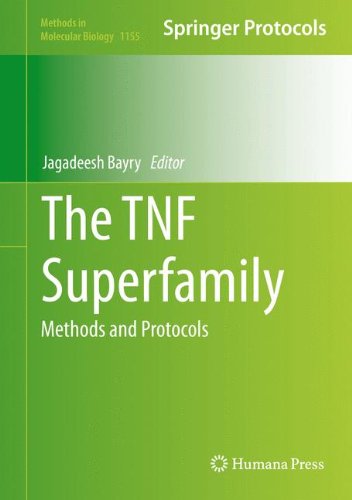

Most ebook files are in PDF format, so you can easily read them using various software such as Foxit Reader or directly on the Google Chrome browser.
Some ebook files are released by publishers in other formats such as .awz, .mobi, .epub, .fb2, etc. You may need to install specific software to read these formats on mobile/PC, such as Calibre.
Please read the tutorial at this link. https://ebooknice.com/page/post?id=faq
We offer FREE conversion to the popular formats you request; however, this may take some time. Therefore, right after payment, please email us, and we will try to provide the service as quickly as possible.
For some exceptional file formats or broken links (if any), please refrain from opening any disputes. Instead, email us first, and we will try to assist within a maximum of 6 hours.
EbookNice Team

Status:
Available4.5
28 reviewsExploring these type II trans-membrane proteins, The TNF Superfamily: Methods and Protocols focuses on various techniques to investigate aspects of the TNF Superfamily members in health and disease. Opening with protocols to understand the signaling process of TNF family members, this detailed volume continues with technical examples of investigating the role of TNF family members in physiopathologies, protocols on modulation of TNF signaling by pathogens, experimental applications of TNF-reporter mice, as well as methodologies for various assays of TNF family members and the production of recombinant molecules. Written for the Methods in Molecular Biology series, chapters include introductions to their respective topics, lists of the necessary materials and reagents, step-by-step, readily reproducible laboratory protocols and tips on troubleshooting and avoiding known pitfalls.
Practical and ready to use, The TNF Superfamily: Methods and Protocols will aid researchers investigating this key family of proteins, involved in vital processes such as providing signals for activation, differentiation, survival and death of cells, modulation of immune response and inflammation, hematopoiesis and osteoclastogenesis.